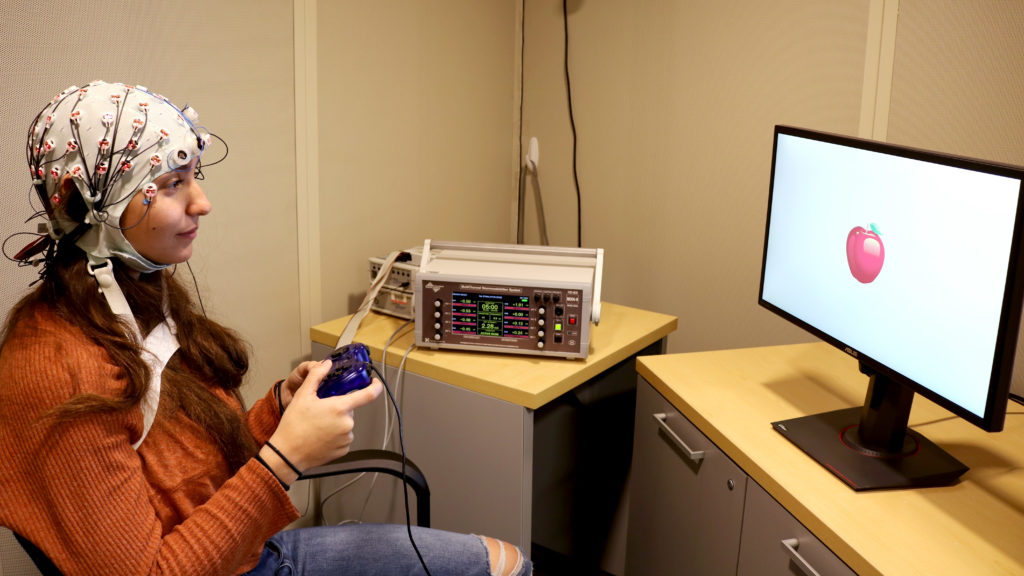Learn about brain health and nootropics to boost brain function
Zapping brain with precise electrical current boosts working memory in older adults, study finds


hooting electrical current into the brain for just 25 minutes reversed the decline in working memory that comes with aging, scientists reported on Monday. Although the researchers tested the effects on people for only 50 minutes, the finding offers hope for boosting a mental function that is so crucial for reasoning, everyday problem-solving, and planning that it has been called the foundation of intelligence.
SBy stimulating the brain in precise regions with alternating current (AC), “we can bring back the superior working memory function you had when you were much younger,” psychology researcher Robert Reinhart of Boston University told reporters. “The negative age-related changes [in working memory] are not unchangeable.”
For alternating current, delivered by electrodes embedded in a skull cap, to become a treatment for working memory deficits, however, it would have to overcome a long list of hurdles, starting with proof that it’s safe. But whether or not the findings, published in Nature Neuroscience, result in any practical applications, they provide some of the strongest evidence yet of why older adults aren’t as good at remembering a just-heard phone number or an address in a just-seen text: Brain circuits become functionally disconnected and fall out of synchrony.

“This is a well-designed, rigorous study,” said neurophysiologist Michael Nitsche of Germany’s University of Göttingen, who reviewed the paper for the journal. “It adds important information about the causal relevance of alterations of [brainwaves] for age-dependent cognitive decline, and it shows that these alterations are reversible.”
Working memory is the sketchpad of the mind, where information — just acquired or hauled up from long-term memory — is weighed, considered, manipulated, and fed into cognitive tasks, from following a conversation to doing mental math. The brain writes on this sketchpad with the oscillations in neuronal firing known as brainwaves, which carry signals within and between the high-level-thinking prefrontal cortex and the temporal lobes, home to the memory-storing hippocampus.
For their experiments, the BU scientists tested the working memories of 42 younger adults (aged 20 to 29) and 42 older ones (60 to 76). People saw an image of, say, an accordion, and 3 seconds later saw it or something else, and then were asked to indicate whether they’d seen it before. Older adults answered correctly about 80% of the time, and younger ones 90%. While people were (presumably) trying to remember the accordion, EEGs monitored their brainwaves, finding significantly less synchronization of the oscillations in older adults than younger ones.
The younger participants then got sham stimulation with alternating current — they wore a cap with electrodes but no current — while older adults got the real deal, in each case for 25 minutes. It feels tingly, but only for 30 seconds or so, and no one could tell sham current from the real kind.
For real AC, the frequency was tuned to the individual brain, matching its natural oscillations so as to synchronize brain waves that, as people age, apparently fall out of sync. “We can tune [the stimulation] to your frequency, your sweet spot,” Reinhart said.
Almost immediately, older adults’ accuracy improved. It quickly reached their younger counterparts’ 90%, and maintained that level for 50 minutes after the stimulation stopped, when the scientists stopped taking measurements. EEG showed that, in the older adults, brain waves between the temporal and prefrontal cortex showed the same degree of synchrony as in younger ones.
Accuracy in the treated older adults wasn’t dipping after 50 minutes, Reinhart said: “My guess is that [the effect] lasts more than 50 minutes, and potentially a few hours.”
The idea that brain-wave synchronization underlies working memory goes back at least 20 years, with many labs finding evidence that oscillations of specific frequencies are necessary for working memory. “Populations of cells that synchronize their activity are believed to be transferring information,” Reinhart said — for working memory, from the temporal regions to the prefrontal cortex.
After alternating current kicks brain waves from the prefrontal cortex and temporal lobes into synchrony (about eight cycles per second worked pretty well), “those two areas are talking to one another,” he said. “We’re resynchronizing these brain regions.”
Other labs have also shown that electrical stimulation of the brain can improve memory. In a 2018 study, current from electrodes implanted in the brains of people with epilepsy improved memory by 15%. And research funded by the Pentagon’s Defense Advanced Research Projects Agency reported last year that a “human memory prosthesis”— electrodes implanted in the hippocampus — improved both short-term memory (similar to working memory) and long-term memory by up to 35% or so in eight people with epilepsy.
This is definitely a “don’t try this at home” experiment. Additional research will be needed to determine whether alternating-current stimulation can improve working memory in a durable way, how often it would have to be given, what targets and AC frequency are optimal, and whether the artificial lab task translates into real-world benefits. “I would not rule out [durable improvement] completely,” said Göttingen’s Nitsche. “Advanced stimulation protocols might result in longer-lasting effects, and work has to be conducted to identify optimized protocols” — and test their safety.
The worse the memory of the older people in Reinhart’s study, the more that alternating-current stimulation improved it. But even in younger adults with good memory, “we are seeing boosts in brain and behavior measures,” he said about unpublished results. “I think it is possible to turbocharge” their memory, too.
Click here to view full article